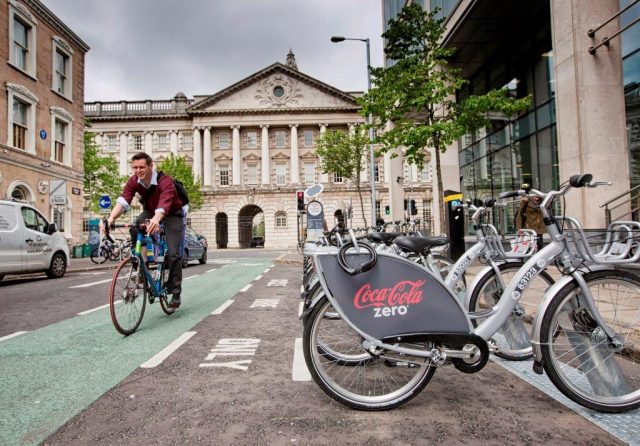
Cycling is one of our most popular leisure pursuits but can it move from being a hobby to an everyday transport mode and, importantly, replace car journeys?
Large groups of cyclists racing down country roads and family bike rides around local parks and cycle paths are increasingly common sights in Northern Ireland, particularly since the success of the Grande Partenza ‘Big Start’ of the 97th Giro d’Italia gripped the country in 2014. What is less common, however, is the sight of everyday cyclists using their bike to get to their place of work or education, to visit the shops or go for a coffee with friends.
Increasing the number of people cycling for everyday purposes is seen as the panacea for many of society’s challenges, with claims it will improve our health, cure the obesity epidemic, revitalise our town centres and even help to address climate change. However, the fact is that cycling, as a form of everyday transport, is a marginal activity in Northern Ireland.
The cycling debate gathers pace in the NI Assembly
Cycling was a hot topic throughout the 2011-2016 Northern Ireland Assembly mandate. For example:
- There were 348 cycling related questions answered by the Minister for Regional Development;
- An all-party group was established to promote awareness and development of cycling policies and provision in Northern Ireland; and
- The Committee for Regional Development held an inquiry that highlighted the potential benefits of cycling to the local economy.
A Bicycle Strategy for Northern Ireland
The apparent advocacy of cycling across the Assembly preceded the establishment of a dedicated cycling unit within the Department of Regional Development (DRD) ‘in order to give increased focus and priority to the needs of cyclists and to encourage greater participation in this healthy and sustainable form of transport’. This unit analysed international best practice in cycling development and held a public seminar in 2014, where a host of renowned international speakers came to Belfast and shared their cycling expertise and experiences.
Ultimately, the role of the cycling unit was to develop a new cycling strategy for Northern Ireland with the aim of making everyday cycling the norm and ensuring it is an attractive, accessible and safe option. Northern Ireland’s second cycling strategy, Northern Ireland Changing Gear – A Bicycle Strategy for Northern Ireland, was published in 2015; it is based on a three pillar approach:
- Building a comprehensive network for the bicycle;
- Supporting people who chose to travel by bicycle; and
- Promoting the bicycle as a mode for everyday journeys.
Cycling expenditure
While the pro-cycling rhetoric was consistent throughout the previous mandate, the reality is that this was not reflected in terms of departmental expenditure. It is no coincidence that in those nations where the bicycle is an everyday mode of transport, there has been a long-term and consistent financial commitment to promoting a cycling culture. For example, in the city of Copenhagen, Denmark, and a number of city regions across the Netherlands, cycling accounts for up to 40% of all trips. Authorities in these regions consistently spend over £20 per head of population (PHP) on cycling every year. By contrast, in the decade from 2001/02 to 2011/12 the DRD spent just £9m; this is less than £1m per year on average, or around 70 pence PHP. This level of cycling expenditure represents 0.22% of total transport expenditure.
Expenditure on cycling was significantly above average in 2014, with a total spend of some £7.5m or £4.17 per PHP. Through this investment a number of key developments were made:
- The DRD cycling unit was established;
- The draft cycling strategy was published,
- A number of cycling demonstration projects were rolled out; and
- The Belfast bike scheme was launched with an investment of £1.1m from DRD.
Cycling expenditure is set to remain above average in 2015/16. However, at the time of writing, the expectation is that the total spend will drop to £2.4m or £1.30 PHP. The cycling strategy acknowledges the benefits that can be realised from adopting the recommended investment levels for cycling of £10 to £20 PHP. However, it acknowledges that in the current financial climate realising this level of investment may be very ambitious.